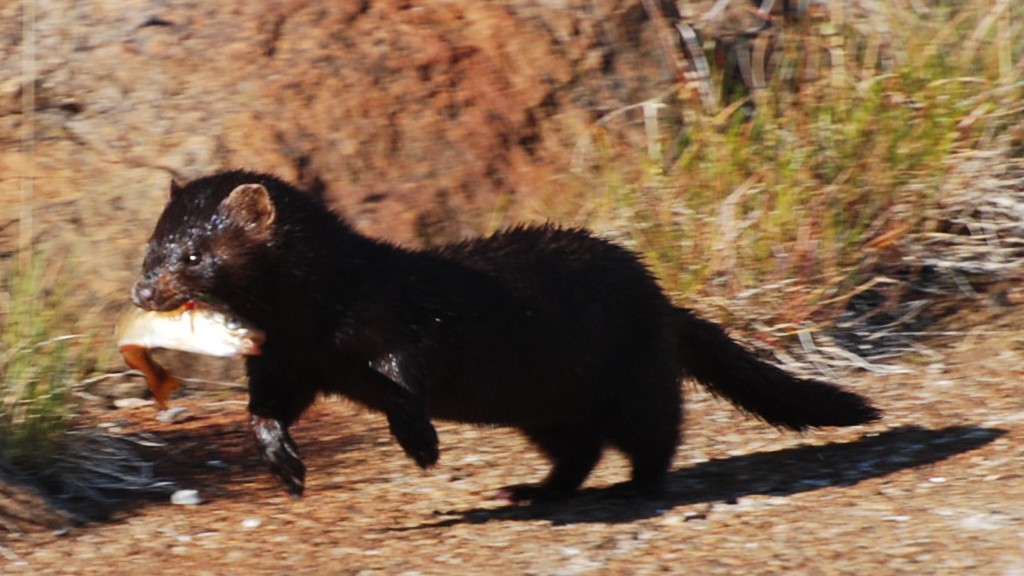American mink
A species of Neovison Scientific name : Neovison vison Genus : Neovison
American mink, A species of Neovison
Scientific name: Neovison vison
Genus: Neovison
Content
Description General Info
 Photo By Littleisland lighthouse , used under CC-BY-SA-2.0 /Cropped and compressed from original
Photo By Littleisland lighthouse , used under CC-BY-SA-2.0 /Cropped and compressed from original Description
The American mink differs from members of the genus Mustela (stoats and weasels) by its larger size and stouter form, which closely approach those of martens. It shares with martens a uniformly enlarged, bushy and somewhat tapering tail, rather than a slenderly terete tail with an enlarged bushy tip, as is the case in stoats. The American mink is similar in build to the European mink, but the tail is longer (constituting 38–51% of its body length). The American mink has a long body, which allows the species to enter the burrows of prey. Its streamlined shape helps it to reduce water resistance whilst swimming. The skull is similar to that of the European mink, but is more massive, narrower, and less elongated, with more strongly developed projections and a wider, shorter cranium. The upper molars are larger and more massive than those of the European mink. The dental formula is 3.1.3.13.1.3.2. Domestic mink, which are bred in fur farms and are substandard genetically, have 19.6% smaller brains, 8.1% smaller hearts, and 28.2% smaller spleens than wild mink. The feet are broad, with webbed digits. It generally has eight nipples, with one pair of inguinal teats and three pairs of abdominal teats. The adult male's penis is 2.2 in (5.6 cm) long, and is covered by a sheath. The baculum is well-developed, being triangular in cross section and curved at the tip. Males measure 13–18 in (34–45 cm) in body length, while females measure 12–15 in (31–37.5 cm). The tail measures 6–10 inches (15.6–24.7 cm) in males and 6–8 in (14.8–21.5 cm) in females. Weights vary with sex and season, with males being heavier than females. In winter, males weigh 1–3 lb (500–1,580 g) and females 1–2 lb (400–780 g). Maximum heaviness occurs in autumn. 
General Info
Lifespan
3-12 years
Diet
American mink primarily consumes other animals, marking them as a carnivorous species. Characteristically, its diet includes fish, birds, and small mammals, with particular promptness towards aquatic rodents and crustaceans.
Appearance
American mink is a medium-sized mammal with a streamlined, elongated body and glossy, dense fur. They possess a distinctive dark brown base coloration, often with slightly lighter tones on the underparts. Their faces have characteristic white patches. American mink has a long, slightly bushy tail and short, sturdy limbs, perfect for swimming. Males are generally larger than females.
Behavior
American mink is primarily solitary and displays crepuscular behavior, being most active at dawn and dusk. This species is known for its semi-aquatic lifestyle, adroit swimming abilities, and foraging behavior for a diet chiefly composed of fish, aquatic invertebrates, and small mammals. Territorial, they often mark and defend territories using anal scent glands.
Population
Stable
Scientific Classification
Phylum
Chordates Class
Mammals Order
Carnivores Family
Mustelids Genus
Neovison Species
American mink